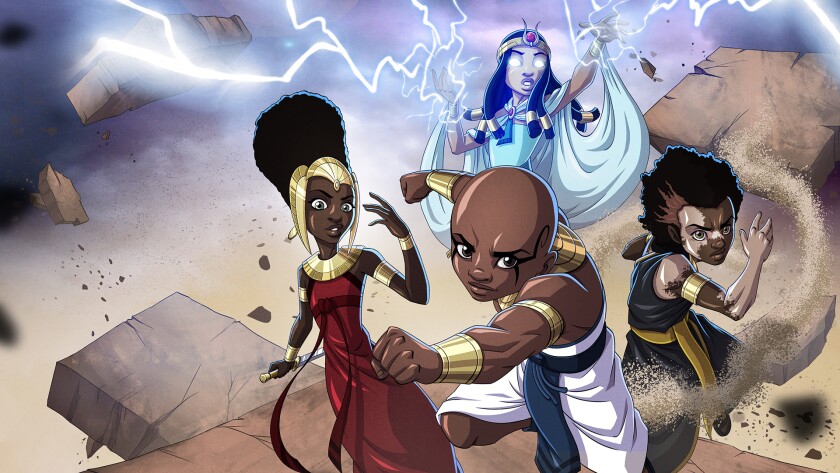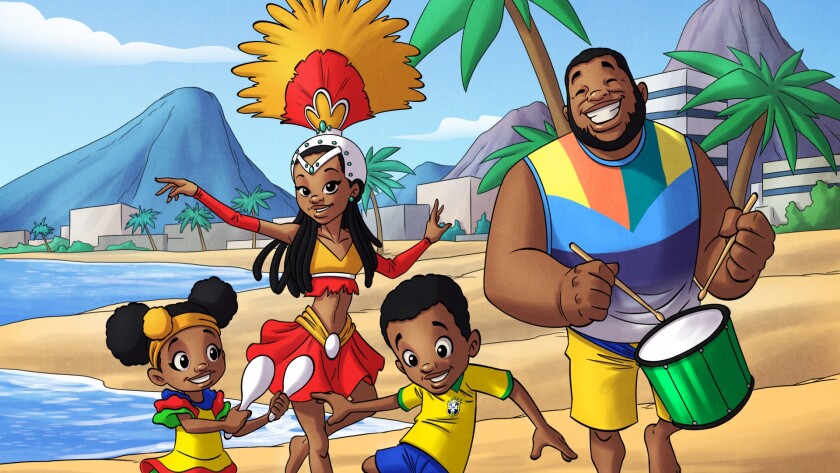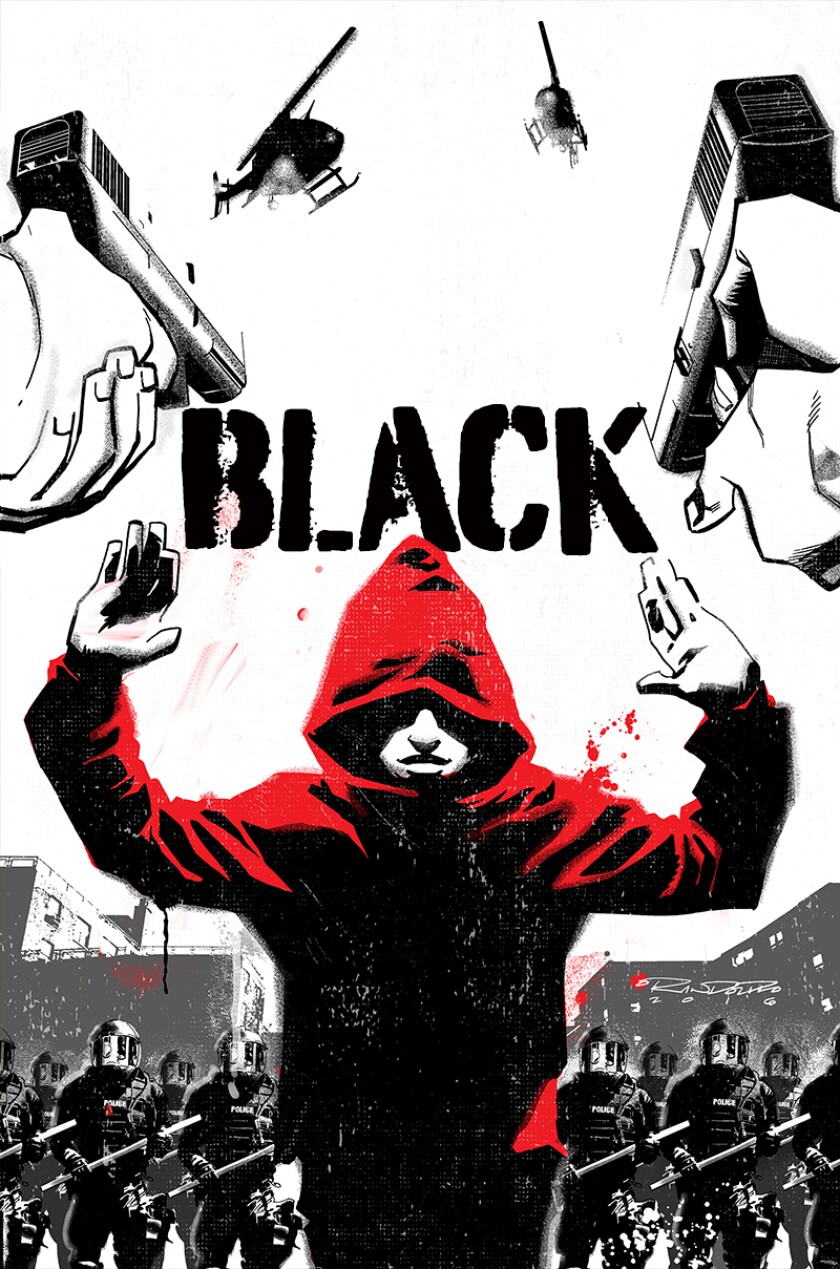Manuel and Geiszel Godoy are military veterans, and they think deeply in social justice. But higher than all, they are entrepreneurs who noticed an underdeveloped sector in their market and dove in.
“We have to demonstrate that we can pull a Tyler Perry as a community,” Manuel Godoy, president of Black Sands Amusement, claims in a latest movie job interview. “The thought is that the even bigger the firm gets, the superior the IP does, the more most people wins, and we can fund our tasks ourselves for the reason that we have the expertise, the experience to do it.”
The Godoys’ niche is a developing a single: indie comics by Black artists, written for Black families about Black men and women, with a emphasis on tales of Africa before slavery. Among the their tasks are an forthcoming animated sequence and the Black Sands Publishing application, which will provide free accessibility to 26 primary comic publications when it launches May 1, No cost Comedian Book Working day. ’
“If we get this performed,” Godoy claims, “we’ve verified that you no more time have to stroll through the gate they crafted in buy to get to the principal stage.”
Black Sands isn’t the initially through the gate. It joins a developing hive of Black creators who’ve carved area in a format that for many years was steeped in racism and exclusion.

“Black Sands: The Seven Kingdoms” is the flagship comic sequence of Black Sands Amusement.
(Black Sands Amusement)
Booming genres like Afrofuturism (which meshes African culture with science fiction) reflect worlds envisioned by Black activists: Worlds in which existing electrical power structures are dismantled and Black men and women prosper.
But there are other genres on the rise — from romance and horror to Black superhero reboots and musings on workaday existence. In the darkish-fantasy adventure “Submerged” by Vita Ayala, a woman embarks on a quest to find her estranged brother just after he gets shed in a New York City subway. Ebony Flowers’ “Hot Comb” explores Black women’s associations with their hair. In Micheline Hess’ horror comic “Diary of a Mad, Black Werewolf,” a clan of Black female werewolves prey on racist cops and “Karens.”

Manuel Godoy is the president and co-founder of Black Sands Amusement.
(Black Sands Amusement)
Just as Black Life Matter builds on movements of the earlier, the rise of Black comics is more of a revival.
“One issue that gets shed when talking about the good Black orators, thinkers and historical figures of our time are the Black comic creators,” claims Sheena Howard, professor of interaction at Rider University. “Challenging racial stereotypes in comics is a large section of what Black creators have performed, along with right addressing injustice.”
Black Panther, regarded by lots of the initially Black superhero in the American comic reserve mainstream, is a key instance. His emergence in 1966 marked a historic minute for illustration in comics. As his storyline advanced, T’Challa, king of the futuristic Wakanda, resolved colonialism, racism and segregation.
Far more than fifty a long time afterwards, Chadwick Boseman, the late actor who brought the Black Panther to cinematic existence in 2018, assisted implant the African kingdom in the American mainstream.
But the road to Wakanda was prolonged and painful. For significantly of the 20th century, racist illustrations or photos of Black people crammed the web pages of the mainstream press. Numerous cartoons have been caricatures derived from blackface minstrelsy, like Ken Kling’s “Joe & Asbestos.” Even children’s publications by admired authors, this kind of as Dr. Seuss’ “If I Ran the Zoo,” depicted Black men and women as monkeys.
“We often see ourselves through the eyes of other individuals,” claims Howard, editor-writer of “Why Wakanda Matters: What Black Panther Reveals About Psychology, Identification, and Conversation.”
When people illustrations or photos are internalized, she provides, they can harm id and self-esteem. “We often get our perceptions of other individuals from the media ecosystem.”

In 2016, the writer Ta-Nehisi Coates commenced publishing a “Black Panther” reboot with Marvel Comics.
(Timothy A. Clary/AFP by way of Getty Pictures)
Nevertheless even when black- and yellowface have been common, there have been alternate options. Oliver Harrington, a Black political cartoonist, followed the Harlem-born Bootsie in his comic strip “Dark Laughter.” Jackie Ormes, regarded as the initially Black girl cartoonist, fashioned assured and smart female people in her “Torchy Brown” sequence.
“A whole lot of the Black cartoonists early on have been striving to normalize Black existence — exhibiting the good and the bad,” claims writer and illustrator John Jennings. Which is what made Ormes’ and Harrington’s comics powerful they have been outliers but they did not trade on exoticism. “Their stuff was slice-of-existence work. … People have a tendency to forget that owning joy in the confront of oppression is a radical act.”
In 1947 came “All-Negro Comics,” a one-concern, smaller-press comic reserve anthology developed solely by Black artists and launched by reporter Orrin C. Evans.
The character Lion Male — whom lots of deem a prototype of Black Panther — was a college or university-educated, Black superhero protecting the world’s biggest uranium deposit. Evans wrote in the introduction that he hoped Lion Male would give Black Us residents “a finer appreciation of their African heritage.”
A second concern was prepared, but sellers would not market Evans the paper to print it.
“The simple fact that [Evans] went through the problems to make that reserve was an act of resistance,” claims Jennings, UC Riverside media and cultural studies professor and founder-curator of Megascope, a publisher of graphic novels by and about men and women of coloration. (Among the Megascope’s forthcoming works are “Across the Tracks,” a younger readers’ comic about the Tulsa Race Massacre, out May 4, and “Hardears,” a sci-fi fantasy adventure and political satire encouraged by Barbados’ Crop About competition, out May 11.)

Frances Gateward, professor of media idea and criticism at Cal Condition Northridge, is the co-editor of “The Blacker the Ink: Constructions of Black Identification in Comics and Sequential Art.”
(Myung J. Chun / Los Angeles Instances)
Virtually two many years afterwards, Black Panther emerged from the backdrop of the civil rights movement, paving the way for potential Black superheroes like Blade, Luke Cage and Storm.
Not all Black comic heroes wore capes. “Martin Luther King and the Montgomery Story,” posted in 1957, made available a primer on nonviolence. The mainstream comic market overlooked it, but it was broadly circulated amongst educational facilities, church buildings and civil rights groups.
In this century, there was the “March” trilogy, an award-successful graphic novel about the movement by Andrew Aydin and John Lewis, the late congressman and civil rights icon.
Related tales, like Kyle Baker’s sequence “Nat Turner,” about the slave revolt, and David F. Walker’s “The Life of Frederick Douglass” made available classes about record, revolution and resistance. Aaron McGruder’s syndicated comic strip “The Boondocks” (1996 to 2006) commented on political and well known occasions through the eyes of an African American boy.

Black Sands’ “Mori’s Loved ones Adventures” follows a Black family as they journey the entire world.
(Black Sands Amusement)
Now that record is being made all over again — on the streets and on the webpage — aged people are being reimagined for modern-day situations and defunct imprints are being revived.
DC Comics not long ago announced it will reimagine the 1993 origin tale of Static, the electricity-wielding Black teenager (a.k.a. Virgil Hawkins), who acquired his superpowers just after a clash among gangs and law enforcement — an party acknowledged as the Big Bang. This time, Hawkins’ superpowers originate from a law enforcement brutality protest.
The timely retelling of Static and other meta-people, acknowledged as the Bang Infants, is section of DC’s revival of Milestone Comics, a pioneering imprint launched by 4 Black creators in 1993 that centered superheroes of coloration. The primary imprint in essence shut down just after 4 a long time in section for the reason that of the notion that it was only for Black audience. Nevertheless Static was so well known he not only joined the DC Comics universe, but acquired his individual WB animated sequence, “Static Shock.”
“When you are trapped in that dilemma of like, ‘Milestone Comics is only for Black men and women,’ then your only marketplace is fourteen% of the population,” Howard claims, “and that becomes incredibly tough.”
Milestone’s demise was a enormous reduction for comics author Kwanza Osajyefo, who felt it was a single of few comic publishers that correctly portrayed “Blackness and Black culture.” DC options to launch new titles with Milestone people this summer season.
When Osajyefo took a work in 2007 with DC Comics, he assisted start the webcomics imprint Zuda, prioritizing content material from creators of coloration. It shut 3 a long time afterwards, but it made place for an thought that commenced percolating in his head more than a ten years in the past: What if only Black men and women experienced superpowers?

“Black” by Kwanza Osajyefo and Tim Smith imagines a entire world the place only Black men and women have superpowers.
(Black Mask Studios)
“I grew up looking at comics like X-Males, the place these white people are intended to be outsiders,” he claims. “People simply call them analogies for minorities like Black men and women, and I’m like, ‘No. Which is not correct.’” When Cyclops and Jean Grey take off their costumes at the conclude of the day, they’re white. Nobody’s pulling Wolverine in excess of for the reason that he’s driving a pleasant car.”
In 2016, Osajyefo and other individuals launched a profitable Kickstarter campaign for “Black” — about a teen who discovers he has superpowers just after surviving a cop’s bullet. Following “Black” was posted, film presents flooded in. Very last 12 months, Warner Bros. obtained the feature adaptation rights.
Studio desire was in no smaller section thanks to the accomplishment of director Ryan Coogler’s take on “Black Panther,” along with the animated movie “Spiderman: Into the Spiderverse.” They debunked the thought that motion pictures starring Black-led superhero people are not profitable, claims Frances Gateward, professor of media idea and criticism at Cal Condition Northridge and co-editor of “The Blacker the Ink: Constructions of Black Identification in Comics and Sequential Art.”
“Disney/Marvel so grossly underestimated the film’s possible that followers who wanted to buy ‘Black Panther’ merchandise could not find any,” she claims. “So, as lots of energetic fandoms do, they made their individual. We commenced to see more titles showcasing Black people, in each genre from romance to horror to superheroes.”
Potentially more than anything at all, tales like “Black Panther” and publishers like Black Sands Amusement provide examples of “heroism,” Gateward claims, “both in standard every day residing and fantastical superpowered beings — but possibly most importantly, by exhibiting Black communities surviving and thriving.”





More Stories
Martial Art Styles – Benefits for Women
Anime – Five Different Types and Why You Will Enjoy Them
Eclectic Decor, Artistic Elements